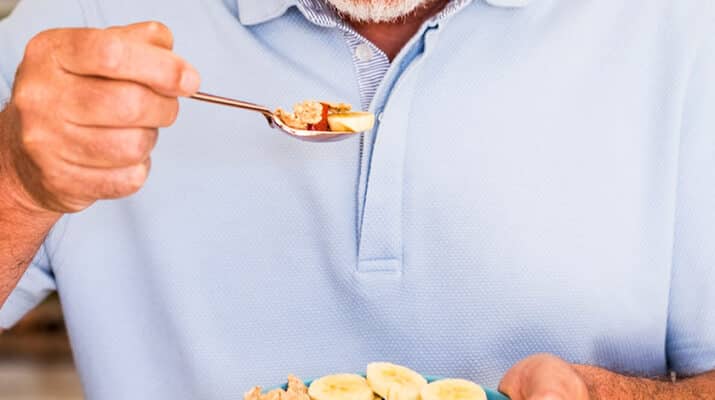By Deborah Jeanne Sergeant
Many aspects of health change as you enter older adulthood, including nutritional needs. With lessening activity, caloric needs may decrease, but the same amount of nutrients — and in some instances, more — are still needed.
“More and more research is coming out that you need more protein as you age to prevent lean body mass loss,” said Noelle Citarella, registered and certified dietitian nutritionist and integrative/functional nutrition certified practitioner at Buffalo Nutrition and Dietetics, PLLC in Buffalo. “In practice, people aren’t eating as much as they need to.”
She added that because stomach acid decreases in older age, it can be more difficult to break down proteins and absorb B-12 and other nutrients, which can put older adults at risk for deficiencies.
Decreased appetite and poorer diet may be in part because of lower activity levels, but also issues such as decreased enjoyment of food and a shift in preference. As the sense of taste and smell may decline, a person’s food choices often shift towards sweet, salty foods and “comfort foods” and away from things such as vegetables, beans and whole grains. Replacing a balanced meal with crackers, chips, processed foods and pieces of candy can lead to malnutrition and weight gain.
Instead, finding ways to season wholesome foods like chicken breast with herbs and spices can keep an older adult on target. Homemade soup that includes plenty of vegetables, beans and meat can offer more protein and variety to the diet and less sodium than canned chicken noodle soup.
Difficulty in chewing can skew older adults away from nutritious foods such as meat and nuts. Citarella recommends trying nut butters, stewed meat, hard boiled eggs and Greek yogurt to boost protein intake among people with dental issues.
Thinking outside accustomed foods can lead to more nutritious food choices. For example, a smoothie that combines raspberries with a less palatable vegetable like kale or carrots can make it easier to consume more veggies. Or, snacking on hummus with whole grain crackers instead of potato chips and French onion dip.
Protein shakes represent an easy way to increase protein intake.
A tight budget can make protein sources seem out of reach. Citarella mentioned canned tuna and chicken as economical sources of protein.
“If they’re worried about mercury, some companies can only low-mercury tuna,” she added.
Many older adults are under-hydrated as they want to not have to rush to the bathroom, especially at night. Citarella said that the sensitivity to thirst decreases in older adulthood but not the need for hydration. Not drinking enough can contribute to constipation, urinary tract infections and numerous serious health issues.
“To ensure adequate hydration, it helps to take along a filled water bottle,” Citarella said. “The best thing to do is get a large water bottle they can easily drink from with a straw.”
Adding a slice of lemon, a few frozen berries or a cucumber slice can help keep water more palatable.
For some older adults, accessing food is difficult because of physical impairments, which means they subsist on less nutrition.
“Food insecurity for the elderly is multi-faceted,” said Amy Beney, registered dietitian with Nutrition Insights, PLLC in Lockport.
It’s not just transportation, but also the ability to navigate a store safely and difficulty in hauling groceries from store to car and car to the kitchen. Beney recommended looking into grocery delivery companies such as Instacart or Amazon to automate grocery delivery.
For those who eschew technology, signing up with Gogo Grandparent can make ordering groceries as simple as making a phone call from any phone (even a landline). A live operator takes seniors’ requests for things like restaurant orders, grocery delivery and even rides to the grocery store or elsewhere and makes all the arrangements through apps such as GrubHub, Instacart and Uber.
“When elderly people live alone, they don’t have the same desire to cook,” Beney said. “They’re not preparing meals for other people.”
As one option, congregant meals settings can “provide not only a meal but the social aspects,” Beney said.
Citarella reminds older adults that farmers’ market coupons for eligible seniors (www3.erie.gov/seniorservices) can help make food more affordable and offer a good reason to get out and socialize. The site also details how to obtain curbside pick-up of frozen meals for seniors, a good option for people without friends and family to help.
Meal delivery, such as Meals on Wheels (www.feedmorewny.org) or companies like 95 Nutrition (www.95nutrition.com) and RealEats (www.realeats.com) can make obtaining healthful food even easier. The companies offer ready-to-heat meals with a few dietary options.

